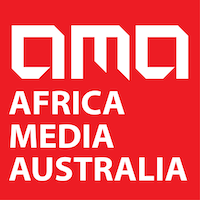In the midst of the debate over the racial labelling of African and Sudanese gangs in the media, The Australian on the 30 July printed an article on a group of men who gatecrashed a party in suburban Melbourne.
That this event should make the news is hardly noteworthy. Crime sells, as does violence, and there is a public interest to it. Unfortunately, what is also increasingly unsurprising is the selective and racial language used in the article. The gatecrashers, the article tells us, were “of African appearance”. Indeed, it tells us no less than three times.
It also links this event to other violent incidents around Melbourne, including the recent death of Laa Chol in the Melbourne CBD, despite no evidence that these events are in fact related.
The implication is that because all the incidents involved people of African heritage, there must be some underlying, racial connection.
Imagine the same logic was applied to crimes involving white Australians, with each being connected in a desperate attempt to concoct a “Caucasian crime problem”.
When the author says “of African appearance”, it is difficult to imagine they mean anything other than black. But why use this label in the first place.
The Australian Press Council, of which The Australian is a member, has quite clear guidelines around the use of racial and ethnic labels to identify perpetrators of crimes.
It states: “Publications should not place gratuitous emphasis on the race, religion, nationality, colour, country of origin, gender, sexual orientation, marital status, disability, illness, or age of an individual or group. Where it is relevant and in the public interest, publications may report or express opinions in these areas”.
An example of this public interest given is if police are searching for perpetrators, and identifying them by their physical characteristics may help apprehend them. However, in this article, as in so many others, there is no mention of any identifying features – height, clothes, hairstyle, tattoos or scars.
Of course, public interest is not an objective category, it is shaped heavily by mainstream media. No doubt the Australian would argue that in light of recent debates and issues, news about ‘African crime’ is in the public interest. Obviously, there is no such interest in news about white crime, or Anglo-Saxon crime.
So, in light of the Press Council’s recommendations, why does it continue to occur?
One reason is the immensely powerful nature of race as a category through which to explain the world and those in it. It is an all too easy category for overworked under-resourced journalists and editors to fall back on.
Another issue is the fact that the Press Council guidelines are just that, guidelines. the quote above is part of their Advisory Guidelines, which, unlike their Statement of General Principles, are not binding on member organisations. The result of this racialised coverage is that people are reduced to a single defining factor – their skin colour. Its impact is felt by Australians of African heritage around the country.
A long history of this type of coverage indicates it won’t go away any time soon. It is therefore important that we challenge it when we see it.
Dr John Budarick
Lecturer, Media department, The University of Adelaide




